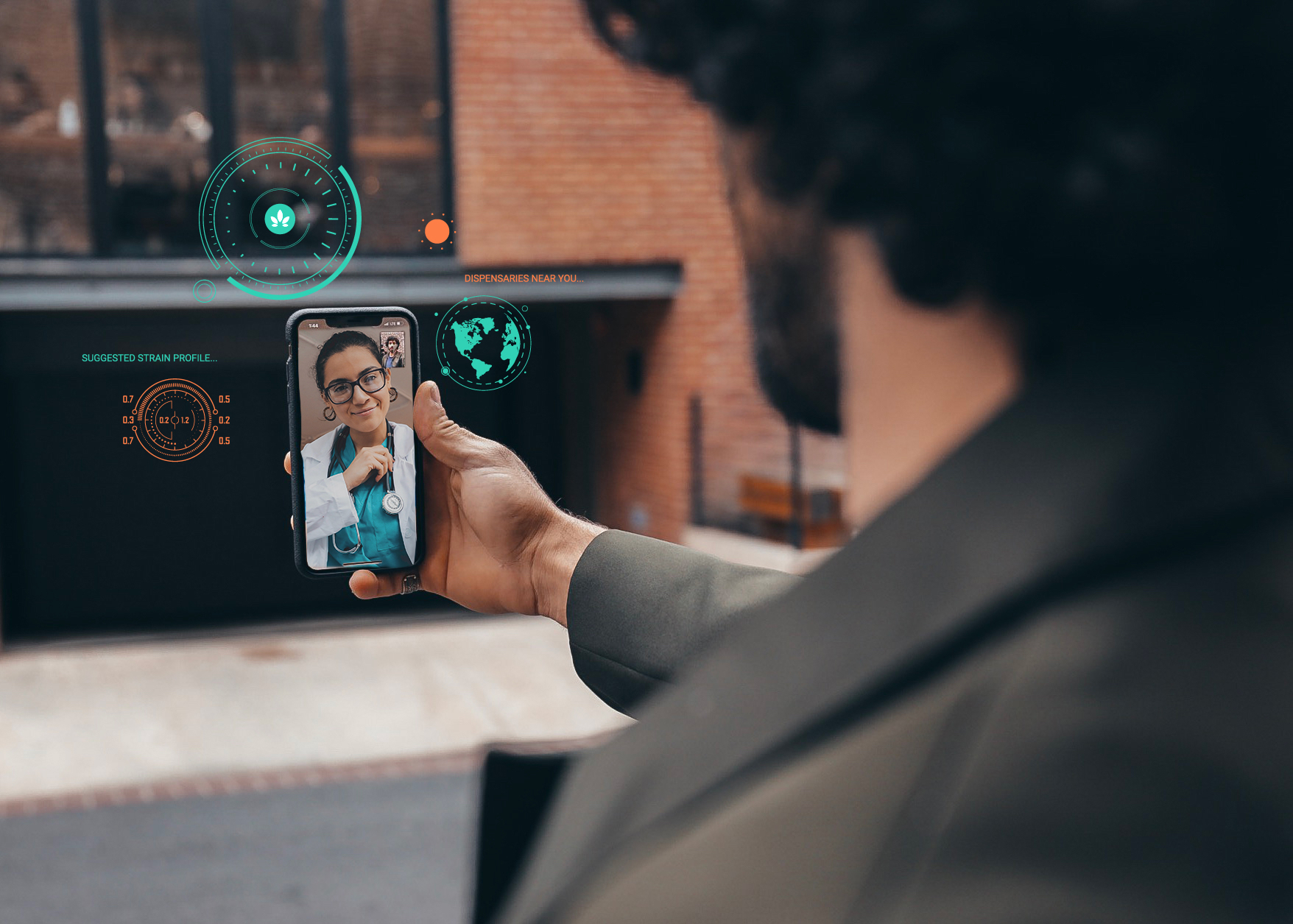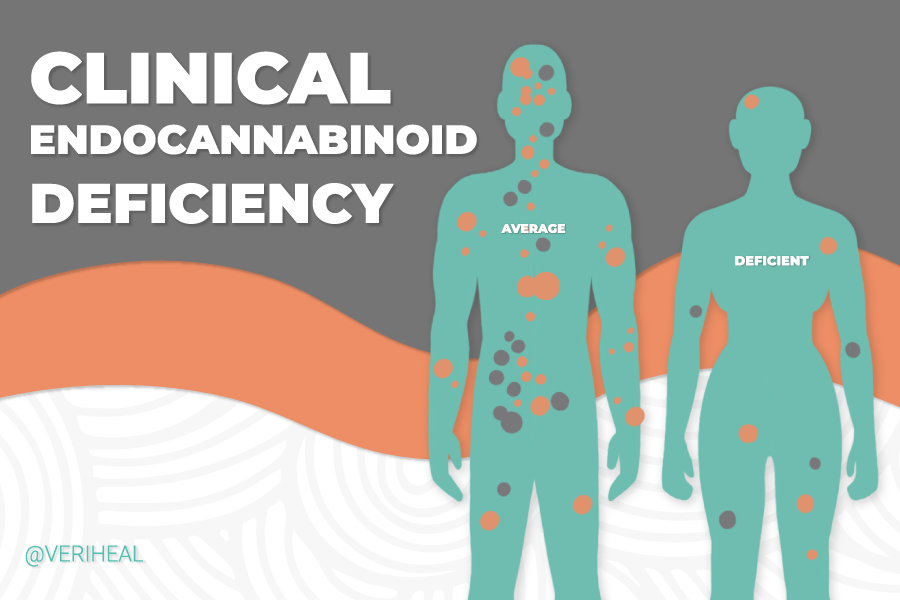Medical Marijuana for Chickenpox: is it a Solution?

- Medical Cannabis Antiviral Activity
- Potential Chickenpox Relief for the Skin
- Complications of Varicella Infections
- What does Reye Syndrome have to do with Chickenpox?
- Chickenpox vs. Shingles
Being infected with chickenpox may simply look like red spots to others, but for those who have an active infection, it can be miserable. The red-spotted, and blistering skin rash is a telltale sign of a chickenpox infection along with a fever and severe itching. This infection is a viral infection caused by the varicella-zoster virus (VZV). It is typically referred to simply as varicella and is considered a herpes virus.
Medical marijuana has been known to help alleviate inflammation and itching of the skin (15). It can also help prevent and heal infections on the skin which can also occur during varicella infections from scratching the blistering spots. Additionally, cannabis has been shown to act as an antiviral against other forms of herpes viruses such as herpes simplex 1 and 2, Epstein-Barr virus, herpes virus saimiri, Kaposi’s sarcoma, and murine herpes virus-68 (26). It could be hypothesized then that cannabis may help with symptoms of VZV, however, there are currently no direct studies or specific evidence of cannabinoid antiviral activity against VZV or its symptoms.
Medical cannabis contains 100s of naturally occurring chemicals including terpenes, which are responsible for smells in plants such as lavender, as well as cannabinoids. Many of the cannabinoids found in cannabis, including Δ9-tetrahydrocannabinol (THC) and cannabidiol (CBD), interact with different pathways in our body to reduce inflammation, alter our perception of pain, and simply maintain our body’s proper body temperature. The main pathway is through the endocannabinoid system (ECS) which consists of cannabinoid receptors CB1 and CB2 and endocannabinoids whose levels can be raised or lowered through the use of cannabis. Endocannabinoids are essentially fat-based neurotransmitters that are produced in our body and are responsible for a variety of processes in our body. The most well-known endocannabinoids are anandamide (AEA) and 2-arachidonoylglycerol (2-AG).
Medical Cannabis Antiviral Activity
Medical marijuana has been shown to modulate the immune system in patients with arthritis, diabetes, and multiple sclerosis (36). This is because the activation of endocannabinoids can directly affect the functionality of immune cells including lymphocytes and cytokine production. There is also research supporting its use to fight bacterial infections such as sepsis, but this research is still in clinical stages. When it comes to viral infections including varicella, the research is still also in clinical phases, but the results are promising.
Scientists believe that the activation of endocannabinoids through CB1 receptors may inhibit the release of calcium stores from cells in our body, which impacts several different proteins our cells release as well. This is thought to influence the ability of viruses to replicate in neurons, or nerve cells (26). On the other hand, the activation of CB2 receptors is thought to alter our innate and adaptive immune response to the virus. This is partly how medical cannabis suppresses inflammation and our body’s responses to virus-specific cellular and humoral responses.
The use of medical cannabis and its cannabinoids have been researched regarding herpes simplex 1 and 2. However, in herpes simplex 2, the type of herpes that is responsible for most genital skin sores, these sores have been shown to increase in severity with the use of THC in living test subjects (26).
It is important to note that researchers believe that these mechanisms of CB1 and CB2 receptors are important and helpful in persistent conditions but that they may initially compromise our body’s natural inflammatory responses in acute viral infections (26). In non-lytic (cell does not burst) viral infections, they can be helpful. However, herpesvirus is a lytic (cell-bursting) virus that may never completely leave the body and can be reactivated during immune responses to other infections (35). In-vivo and in-vitro studies have shown that cannabinoids can actually be detrimental in lytic viral infections like HSV, HIV, and hepatitis C and lead to worse outcomes (26).
It is this reactivation of the VZV that triggers a shingles infection later in life after a person has already been initially exposed to the virus. Additionally, a patient with herpes simplex 1 or 2 or Epstein-Barr virus may also experience the reactivation of the viruses. Viruses that can be reactivated are called latent viruses. A 2004 study focused on the use of THC on tissue cultures of herpes simplex 1, Kaposi’s sarcoma, Epstein-Barr, herpesvirus saimiri (in monkeys), and murine herpesvirus 68 (22). They found that THC was able to inhibit the reactivation of Kaposi’s sarcoma and Epstein-Barr viruses (the virus responsible for mono). The THC must work selectively on different viruses as it had no effect on herpes simplex 1.
Potential Chickenpox Relief for the Skin
Our skin cells contain large amounts of cannabinoid receptors as well as the endocannabinoid AEA. They can also be found in hair follicles, the nerve fibers of the skin, sweat glands, and sebaceous oil glands, which makes the skin have a strong potential for the use of cannabinoids (15). Because of this, cannabinoids have clinically been shown to help treat acne, eczema, skin cancer, epidermolysis bullosa, and skin ulcers. The ability of cannabis to reduce inflammation and itching (also known as pruritus) when applied directly to the skin, makes it a potential use for a varicella rash, but there has not been much research targeting initial varicella infections. However, there is no direct evidence for the use of medical marijuana regarding shingles.
Important notes about Cannabis & Varicella
The use of cannabis as an antiviral and specifically targeting the skin is still in its infancy. Though there is some research in these areas, cannabis cannot be recommended by a dermatologist at this time. However, if you do decide to try to treat varicella with cannabis, it is important to let your doctor know. Medical cannabis can interact with existing medications including those for epilepsy. It is also not a great option for patients with pre-existing heart issues as it may cause your heart rate to increase.
Veriheal does not condone the use of medical cannabis on children for conditions that they do not already have medical marijuana access for. It is important to note that marijuana use has been linked to a higher risk of developing psychosis in patients who are under 25.
Complications of Varicella Infections
Most people recover without difficulty from chickenpox, but there are a few complications that can occur which include (13):
- Pneumonia
- Bleeding problems
- Sepsis and other blood infections
- Dehydration
- Bacterial infections of the skin
- Encephalitis, or infections and swelling of the brain
- Hospitalization
- Reye syndrome
There are certain patient populations who may be at a higher risk of developing severe chickenpox infections. Patients who are at higher risk include (13):
- Infants
- Adolescents (between the ages of 10 and 19)
- Adults
- Pregnant women
- Patients with weakened immune systems including those with:
- HIV or AIDs
- Autoimmune diseases
- Transplant recipients
- Patients undergoing chemotherapy, taking immunosuppressive medications, or long-term steroid use
Thankfully there is now a vaccination against the varicella-zoster virus (VZV) which is available to children and adults. This vaccine can help protect against chickenpox once both doses have been completed. It is 90% effective in preventing chickenpox, and in cases where the infection still occurs, these patients will have much milder symptoms (8).
It is important to note that this vaccination will not protect you from shingles. Patients over the age of 50 are recommended to receive two doses of Shingrix, a vaccination that protects against postherpetic neuralgia and herpes zoster (shingles) (9).
What does Reye Syndrome have to do with Chickenpox?
Reye syndrome is a serious, but rare illness that can sometimes occur after a viral infection or another illness such as varicella. It primarily affects children and teenagers, but anyone can get it (33). Researchers are not entirely sure what causes Reye syndrome, but they believe that taking aspirin during infections such as chickenpox can increase your risk of developing it which is why it is important to avoid using aspirin while having this infection.
Reye syndrome can affect the blood, liver, and brain. The symptoms typically come on quickly without warning. These symptoms include (33):
- Nausea and vomiting
- Listlessness, or lethargy
- Delirium
- Convulsions
- Loss of consciousness
- Personality changes including irritability, combativeness, or confusion
Chickenpox vs. Shingles
The varicella-zoster virus that causes chickenpox can also cause shingles. Typically chickenpox is referred to as varicella and shingles is known as Herpes Zoster in the medical community (14). The varicella-zoster virus is a virus in the herpes family, and like other herpes viruses, once you recover from the initial infection, it stays dormant in the body. Shingles occurs when the virus has been reactivated after the initial virus occurs. This can happen by encountering someone who has a current varicella infection, or it can be triggered after other illnesses as the result of a weakened immune system.
Shingles patients are able to spread the varicella-zoster virus to others who have not had chickenpox or have not been vaccinated for it (14). However, some with shingles cannot spread the reactivated shingles form of the virus to others. It is important to keep up on proper handwashing and to avoid touching or scratching both varicella and shingles rashes. Some patients find it helpful to keep the rashes covered to avoid inadvertent scratching.
Note: Veriheal does not intend to give this as professional medical advice. Do not attempt to self-diagnose, or prescribe treatment based on the information provided on this page. Always consult a physician before making any decision on the treatment of a medical condition.
1. Baswan, S. M., Klosner, A. E., Glynn, K., Rajgopal, A., Malik, K., Yim, S., & Stern, N. (2020). Therapeutic Potential of Cannabidiol (CBD) for Skin Health and Disorders. Clinical, cosmetic and investigational dermatology, 13, 927–942. https://www.ncbi.nlm.nih.gov/pmc/articles/PMC7736837/
2. Beji, C., Loucif, H., Telittchenko, R., Olagnier, D., Dagenais-Lussier, X., & van Grevenynghe, J. (2020). Cannabinoid-Induced Immunomodulation during Viral Infections: A Focus on Mitochondria. Viruses, 12(8), 875. https://www.ncbi.nlm.nih.gov/pmc/articles/PMC7472050/
3. Cabral, G. A., & Dove Pettit, D. A. (1998). Drugs and immunity: cannabinoids and their role in decreased resistance to infectious disease. Journal of neuroimmunology, 83(1-2), 116–123. https://pubmed.ncbi.nlm.nih.gov/9610679/
4. Cabral, G. A., Mishkin, E. M., Marciano-Cabral, F., Coleman, P., Harris, L., & Munson, A. E. (1986). Effect of delta 9-tetrahydrocannabinol on herpes simplex virus type 2 vaginal infection in the guinea pig. Proceedings of the Society for Experimental Biology and Medicine. Society for Experimental Biology and Medicine (New York, N.Y.), 182(2), 181–186. https://pubmed.ncbi.nlm.nih.gov/3010327/
5. Carr, D. J., & Tomanek, L. (2006). Herpes simplex virus and the chemokines that mediate the inflammation. Current topics in microbiology and immunology, 303, 47–65. https://www.ncbi.nlm.nih.gov/pmc/articles/PMC4076168/
6. Caterina, M. J., & Pang, Z. (2016). TRP Channels in Skin Biology and Pathophysiology. Pharmaceuticals (Basel, Switzerland), 9(4), 77. https://www.ncbi.nlm.nih.gov/pmc/articles/PMC5198052/
7. Carr, D. J., & Tomanek, L. (2006). Herpes simplex virus and the chemokines that mediate the inflammation. Current topics in microbiology and immunology, 303, 47–65. https://www.ncbi.nlm.nih.gov/pmc/articles/PMC4076168/
8. Centers for Disease Control and Prevention. (2021, April 28). Chickenpox vaccination. Centers for Disease Control and Prevention. Retrieved February 9, 2022, from https://www.cdc.gov/chickenpox/vaccination.html
9. Centers for Disease Control and Prevention. (2022, January 24). Shingrix shingles vaccination: What everyone should know. Centers for Disease Control and Prevention. Retrieved February 9, 2022, from https://www.cdc.gov/vaccines/vpd/shingles/public/shingrix/index.html
10. Centers for Disease Control and Prevention. (2021, April 28). Chickenpox (varicella) for healthcare professionals. Centers for Disease Control and Prevention. Retrieved February 9, 2022, from https://www.cdc.gov/chickenpox/hcp/index.html
11. Centers for Disease Control and Prevention. (2021, April 28). Chickenpox (varicella). Centers for Disease Control and Prevention. Retrieved February 9, 2022, from https://www.cdc.gov/chickenpox/index.html
12. Centers for Disease Control and Prevention. (2019, August 7). Chickenpox vaccination: What everyone should know. Centers for Disease Control and Prevention. Retrieved February 9, 2022, from https://www.cdc.gov/vaccines/vpd/varicella/public/index.html?CDC_AA_refVal=https%3A%2F%2Fwww.cdc.gov%2Fvaccines%2Fvpd-vac%2Fvaricella%2Fbasic-side-effects.htm
13. Centers for Disease Control and Prevention. (2021, April 28). Chickenpox (varicella) complications. Centers for Disease Control and Prevention. Retrieved February 9, 2022, from https://www.cdc.gov/chickenpox/about/complications.html
14. Chickenpox versus shingles-what’s the difference? APIC. (n.d.). Retrieved February 9, 2022, from https://apic.org/monthly_alerts/chickenpox-versus-shingles-whats-the-difference/
15. Eagleston, L. R., Kalani, N. K., Patel, R. R., Flaten, H. K., Dunnick, C. A., & Dellavalle, R. P. (2018). Cannabinoids in dermatology: A scoping review. Dermatology Online Journal, 24(6). https://escholarship.org/uc/item/7pn8c0sb
16. Fischer-Stenger, K., Updegrove, A. W., & Cabral, G. A. (1992). Delta 9-tetrahydrocannabinol decreases cytotoxic T lymphocyte activity to herpes simplex virus type 1-infected cells. Proceedings of the Society for Experimental Biology and Medicine. Society for Experimental Biology and Medicine (New York, N.Y.), 200(3), 422–430. https://pubmed.ncbi.nlm.nih.gov/1319584/
17. Hasnie, F. S., Breuer, J., Parker, S., Wallace, V., Blackbeard, J., Lever, I., Kinchington, P. R., Dickenson, A. H., Pheby, T., & Rice, A. S. C. (2007). Further characterization of a rat model of varicella zoster virus–associated pain: Relationship between mechanical hypersensitivity and anxiety-related behavior, and the influence of analgesic drugs. Neuroscience, 144(4), 1495–1508. https://www.sciencedirect.com/science/article/abs/pii/S0306452206015582
18. Herrera, R. A., Oved, J. H., & Reiss, C. S. (2008). Disruption of IFN-gamma- mediated antiviral activity in neurons: the role of cannabinoids. Viral immunology, 21(2), 141–152. https://www.ncbi.nlm.nih.gov/pmc/articles/PMC2556635/
19. Kennedy, P. G., Rovnak, J., Badani, H., & Cohrs, R. J. (2015). A comparison of herpes simplex virus type 1 and varicella-zoster virus latency and reactivation. The Journal of general virology, 96(Pt 7), 1581–1602. https://www.ncbi.nlm.nih.gov/pmc/articles/PMC4635449/
20. Lancz, G., Specter, S., & Brown, H. K. (1991). Suppressive effect of delta-9-tetrahydrocannabinol on herpes simplex virus infectivity in vitro. Proceedings of the Society for Experimental Biology and Medicine. Society for Experimental Biology and Medicine (New York, N.Y.), 196(4), 401–404. https://pubmed.ncbi.nlm.nih.gov/1848937/
21. Mabou Tagne, A., Pacchetti, B., Sodergren, M., Cosentino, M., & Marino, F. (2020). Cannabidiol for Viral Diseases: Hype or Hope?. Cannabis and cannabinoid research, 5(2), 121–131. https://www.liebertpub.com/doi/10.1089/can.2019.0060
22. Medveczky, M. M., Sherwood, T. A., Klein, T. W., Friedman, H., & Medveczky, P. G. (2004). Delta-9 tetrahydrocannabinol (THC) inhibits lytic replication of gamma oncogenic herpes viruses in vitro. BMC medicine, 2, 34. https://www.ncbi.nlm.nih.gov/pmc/articles/PMC521080/
23. Morahan, P. S., Klykken, P. C., Smith, S. H., Harris, L. S., & Munson, A. E. (1979). Effects of cannabinoids on host resistance to Listeria monocytogenes and herpes simplex virus. Infection and immunity, 23(3), 670–674. https://www.ncbi.nlm.nih.gov/pmc/articles/PMC414217/
24. Naithani R, Mehta RG, Shukla D, et al. Antiviral activity of phytochemicals: a current perspective. In: Watson RZibadi SPreedy V, eds. Dietary components and immune function. Humana Press: Totowa, NJ, 2010, pp. 421–468. https://www.ncbi.nlm.nih.gov/pmc/articles/PMC7121922/
25. Nattkemper, L. A., Tey, H. L., Valdes-Rodriguez, R., Lee, H., Mollanazar, N. K., Albornoz, C., Sanders, K. M., & Yosipovitch, G. (2018). The Genetics of Chronic Itch: Gene Expression in the Skin of Patients with Atopic Dermatitis and Psoriasis with Severe Itch. The Journal of investigative dermatology, 138(6), 1311–1317. https://www.jidonline.org/article/S0022-202X(18)30004-6/fulltext
26. Reiss C. S. (2010). Cannabinoids and Viral Infections. Pharmaceuticals (Basel, Switzerland), 3(6), 1873–1886. https://www.ncbi.nlm.nih.gov/pmc/articles/PMC2903762/
27. Scott, F. T., Johnson, R. W., Leedham-Green, M., Davies, E., Edmunds, W. J., & Breuer, J. (2006). The burden of Herpes Zoster: a prospective population based study. Vaccine, 24(9), 1308–1314. https://pubmed.ncbi.nlm.nih.gov/16352376/
28. Scott A. (1957). Herpes Zoster and Chicken-pox. British Medical Journal, 1(5012), 228–229. https://www.ncbi.nlm.nih.gov/pmc/articles/PMC1974227/
29. Tahamtan, A., Tavakoli-Yaraki, M., Rygiel, T. P., Mokhtari-Azad, T., & Salimi, V. (2016). Effects of cannabinoids and their receptors on viral infections. Journal of medical virology, 88(1), 1–12. https://pubmed.ncbi.nlm.nih.gov/26059175/
30. Tóth, K., Ádám, D., Bíró, T., & Oláh, A. (2019). Cannabinoid signaling in the skin: Therapeutic potential of the “c(ut)annabinoid” system. Molecules,24(5), 918. https://www.mdpi.com/1420-3049/24/5/918/htm
31. Tyring S. K. (2007). Management of herpes zoster and postherpetic neuralgia. Journal of the American Academy of Dermatology, 57(6 Suppl), S136–S142. https://pubmed.ncbi.nlm.nih.gov/18021865/
32. U.S. National Library of Medicine. (2021, September 29). Chickenpox | varicella. MedlinePlus. Retrieved February 9, 2022, from https://medlineplus.gov/chickenpox.html
33. U.S. National Library of Medicine. (2019, October 18). Reye’s syndrome. MedlinePlus. Retrieved February 9, 2022, from https://medlineplus.gov/reyesyndrome.html
34. Wang, J. P., Kurt-Jones, E. A., Shin, O. S., Manchak, M. D., Levin, M. J., & Finberg, R. W. (2005). Varicella-zoster virus activates inflammatory cytokines in human monocytes and macrophages via Toll-like receptor 2. Journal of virology, 79(20), 12658–12666. https://www.ncbi.nlm.nih.gov/pmc/articles/PMC1235827/
35. Whitley RJ. herpes viruses. In: Baron S, editor. Medical Microbiology. 4th edition. Galveston (TX): University of Texas Medical Branch at Galveston; 1996. Chapter 68. Available from: https://www.ncbi.nlm.nih.gov/books/NBK8157/
36. Iffland, K., & Grotenhermen, F. (2017). An update on safety and side effects of Cannabidiol: A review of Clinical Data and relevant animal studies. Cannabis and Cannabinoid Research, 2(1), 139–154. https://www.liebertpub.com/doi/10.1089/can.2016.0034

















